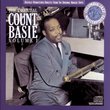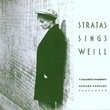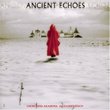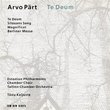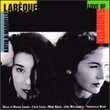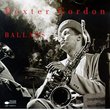| All Artists: Charlie Parker Title: Bird: Complete Charlie Parker on Verve Members Wishing: 3 Total Copies: 0 Label: Polygram Records Original Release Date: 9/19/1988 Re-Release Date: 10/25/1990 Album Type: Box set Genres: Jazz, Pop Styles: Swing Jazz, Bebop Number of Discs: 10 SwapaCD Credits: 10 UPC: 042283714120 |
Search - Charlie Parker :: Bird: Complete Charlie Parker on Verve
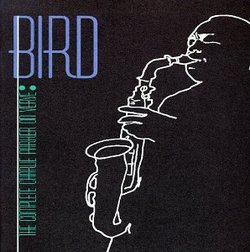 | Charlie Parker Bird: Complete Charlie Parker on Verve Genres: Jazz, Pop
This 10-CD set collects all of Parker's recordings for Norman Granz's various labels, beginning with an isolated Jazz at the Philharmonic appearance in 1946. Parker recorded exclusively for Granz beginning in late 1948, an... more » |
Larger Image |
CD DetailsSynopsis
Amazon.com This 10-CD set collects all of Parker's recordings for Norman Granz's various labels, beginning with an isolated Jazz at the Philharmonic appearance in 1946. Parker recorded exclusively for Granz beginning in late 1948, and the relationship continued to his final studio session in 1954. While the most brilliant flowers of Parker's creativity bloomed before that contract began, this set documents in meticulous detail Bird's longest relationship with a single record company and a period in which he was the most influential musician in jazz. While labels such as Savoy and Dial had been limited to recording Parker in the small groups he worked with regularly, Granz's greater resources allowed Parker to undertake the more expansive projects he sought, such as the famous recordings with strings, heard here in their entirety. Granz also recorded Parker with many of the giants of the Swing Era who made up his roster, and there are performances with many of Parker's original influences, such as Johnny Hodges, Lester Young, and trumpeter Roy Eldridge.Some of Granz's inspirations were less appropriate, like burdening Parker and Dizzy Gillespie with the flamboyant Buddy Rich, but Parker even manages to sound fluent and amused on a confused arrangement of "In the Still of the Night" with reed parts by Gil Evans and voices arranged by Dave Lambert. He's more often heard in congenial small group settings that include Miles Davis, Hank Jones, and Max Roach, and there are plenty of moments when Parker is a match for even his own earlier recordings. The wealth of alternate takes and false starts provides an intimate and detailed portrait of Bird in the studio, and there's a brilliance to Parker's improvisations that makes every track of interest. --Stuart Broomer Similar CDs
Similarly Requested CDs
|
CD ReviewsAn unparalleled examination of Parker's work on Verve hyperbolium | Earth, USA | 08/14/2000 (5 out of 5 stars) "At the time this 10-CD set was issued, it may very well have been the best box set produced. And even considering the fancier packages and more complex concepts that have founded newer sets, the actual content of this release still holds up to the very best. Everything, from the quality of the players, song selection, performances, remastering, liner notes, discographical information, session notes and photographs is absolute five-star material.This set replays all the previously issued Verve material, plus over two hours of previously unissued tracks. The set includes a number of studio sessions, both with Parker's own combos, as well as guest appearances with other's orchestras and bands. Additionally, the discs are filled with historic live performances, beginning with the legendary "Jazz at the Philharmonic" shows of the mid-40's, and progressing through a 1950 show at Carnegie Hall. The new material includes alternate takes, partial takes and false starts, and complete, previously unreleased tracks. Over two hours of previously unissued material.The programming is mostly excellent, though the fragmentary pieces are better for study than for tracking through; The false starts and partial takes are fascinating from a musicological point of view, but less so if you just want to hear some great jazz. The bulk of this compilation is complete tracks, whether master takes or alternates, so the additional material is not much of a hinderence. ...The label was careful to preserve entire sessions/live performances on single discs, hence the varying lengths.Parker's development and excursions (e.g., into Cuban bop with Machito, playing with strings arranged by the likes of Jimmy Carroll) are well represented and displayed on this set. The opportunity to hear Parker's saxophone up against a variety of players and settings brings out more than one could get from any single session or live performance.The engineers have done an impressive job of handling material of this vintage. While most of the tracks don't necessarily have the depth of the 1950's Bluenote recordings, they are certainly not lacking in depth and clarity. Some of the high-end trumpet work is a bit shrill, but then again, a trumpet pushing it's upper reaches is a pretty shrill sound to begin with. A few of the tracks have a small amount of surface noise (assumedly these were transferred from discs where original master tapes could not be found), but nothing that gets in the way of the music.The session notes, intertwined with session commentary are invaluable. The personnel listings, as well as the solo-order listings help both expert and neophyte figure out who's playing. The anecdotes that are interspersed really help bring these sessions and performances to life. The photos are also well-picked and well printed. From solo shots of Parker with his sax to group shots including Dizzy Gillespie, a very young Buddy Rich (with Mitch Miller visible in the background), Ray Brown, Tommy Potter, Max Roach, a young, slightly nervous looking John Coltrane, a young Miles Davis, Red Rodney (lookin' like a mug out of a Warner Brothers movie), Barney Kessel, Ben Webster, Johnny Hodges and many others.In addition to the detailed picture of Charlie Parker, this box provides a welcome introduction to Buddy Rich, drummer (as opposed to Buddy Rich, anachronicstic gold-chain wearing swing-band leader). His drumming on this set shows the same sort of power that later became his trademark, but it also shows him as a drummer rather than a band leader, backing a combo of players that were his equals, rather than his band. One of the other great moments in this set is hearing the crowd going completely out of their heads during the closing solo of the 1949 JATP version of "Perdido." Whether it's Flip Phillips (as it's thought to be) or Coleman Hawkins (as it's rumored to be--the crowd seems to be yelling for Hawkins to play, and the solo apparently quotes some familiar Hawkins lines, but none of the players remember Hawkins actually being onstage during this performance), the screaming and yelling of the audience is the sort of passion I've never witnessed at a jazz performance. You can feel the entire crowd just carried completely away. Amazing... especially the guy who yells "Go! Go! Go!" just like in the movies.Also surprising are the Charlie Parker with Strings tracks. For the most part the strings stay out of the way and let Parker play, though some of these tracks do sound a little bit like "dinner jazz."An expensive box set, but well worth the investment for anyone who really wants to get a deep understanding of Parker's work during this period." Exhaustive, but not for everyone "Unnecessary" Quotes | 10/29/2005 (5 out of 5 stars) "I give this set five stars because it exhaustively catalogues much of the studio work of one of Jazz's greatest artists. The liner notes provide thorough insight into the the happenings at each session presented, along with many well-known biographical facts about Bird. The result the most appropriate biography that the man could ever have hoped for, complete with samplings of his music at each stage of his career. The reason that I say "not for everyone" is that this set contains a huuuuge number of outtakes and false starts. There are about three or four discs in the set that could be put in your disc player at a party. The remainder of the discs require very attentive and precise listening. (Some may say that about all of Parker's music, but the reality is that some people like jazz for ambience more than for focused listening.) I appreciate all of the outtakes because I use this set, along with my Omnibook and Real Book, as a source of inspiration for my musical development. In that sense, the differences between the tracks that Mr. Parker selected and those that gathered dust on the studio shelf is quite elucidating. By listening to the successive tracks in their chronological order, one can gain significant insight into the the musical thinking of one of jazz's giants. If you are an aspiring jazz musician, or if you just happen to like a rigorous listening experience, then this set is for you. If you want a lot of good Parker to put in the mix for your next cocktail hour, buy ten of his studio releases for roughly the same cost." In retrospect... Eddie Landsberg | Tokyo, Japan | 11/07/2009 (5 out of 5 stars) "o.k. the truth of the matter is, most of Bird's revolutionary contributions to modern Jazz were well made and done with by the time he was signed to VERVE... Verve was merely the world discovering that the atom had been split... 10 years earlier... and not quite being ready to fathom it, having it delivered with somewhat more easier to understand language than that on the DIAL and SAVOY session... ergo, Bird on VERVE... which represented a commercialization of Parker's sound, and in some ways "experimental stretching out" in a way, which many fans weren't quite ready to accept...
As for me... well... its true I'll take the DIAL and SAVOY sessions any time... the set is still interesting because you get to hear the man at work outside the settings he was best known for, and how he applied the formula... Take, for example FUNKY BLUES, which more-so anticipates the type of Whiskey drinking blues that followers of his such as Stitt and Donaldson would popularize years later... Other tunes feature Parker with Strings... Laura for one can best be described as haunting... and if you meditate on his great life and genius and how great and tragic it is while listening, can have as haunting effect as the changes to the tune itself. (Stella has a similar vibe!) But then are tunes that in some ways are a bit less then hip... yet - - do get you into it... The orchestral mambos aside, take OLD FOLKS - - it features very rich Swingle Singers type vocals... with Charlie Parker's bluesy wailing sax, Parker's artistry may not be taken to its highest level ever, but the arrangement itself IS... and one can almost imagine Bird laying back and smiling while taking a deep breath and digging the vocals between his solos... -- Actually, I dig it - - including "If I Love Again"... and his famous version of "In The Still of the Night"... In fact, listening to the Alt takes are interesting... The vocalists have a bit of trouble coming in, and the take is clearly run away... and just when its going nuts (vocalists are frantically speeding up trying to catch up with the rhythm section) I'm going, "Woe, woe, woe..." in my head, and finally, thank God you hear somebody, possibly the producer whistle to stop the take. - - Despite that, after multiple takes, you can tell everyone is in good humor... despite one wreck after another... they obviously manage to pull it off... because it would turn out to be one of Bird's more memorable WITH STRINGS recordings.) ...and the bebop side of BIRD is also presented... on CHI CHI for example its the old Charlie Parker live on 52nd Street theme, with one valuable catch... the recording quality is nice, full and rich... In fact, there is a point in the middle of the compilation where Bird starts covering tunes like THE SONG IS YOU, STAR EYES and SHE ROTE (Out of Nowhere) and other standard based changes with a simple ensemble where he really shines and demonstrates being in top form. On top of that you have the JATP recordings... which in my book are sometimes more fun to listen to for the VIBE than BIRD himself (again, I prefer DIAL and SAVOY), but all important moment of Jazz (not to mention civil rights history - - read up on the story behind the story if you ever have the time!) As for my overall critique of the set, keep in mind that a great deal of it also has alt and false takes - - meaning that there's lot's of stuff that will delight the hard core Jazz historian/student of Bird that will annoy the average listener. (Being die hard, every time I get to hear his voice, I tend to jump out of my seat... and I also enjoy the recording booth banter...) - - I think another interesting point about the album is that one is left the question many have since asked... Had Bird lived what direction would he have gone...? My guess, based an exhaustive listen of his music at that era... he probably would have done what many before him did... I imagine he would have stepped aside and become a "passionate follower" and contributer to whatever would come (most likely Hard Bop) - - while at the same time recording more publicly fathomable albums (like With Strings) - - the fervor of bop would have been gone, but I can imagine him on shows like Sullivan playing "cool" but bluesy hits of the era and kinda going in more of a Quincy Jones/Stan Getz/Paul Desmond type direction... Most of his followers probably would prefer not to believe that... but that's what I imagine... and whatever, it doesn't matter, because the past is the past, and this is our only glimpse of it... As for the VERVE concept... well, they had a tendency to take well know Jazz stars of the era and burry them with great production and orchestrations... then say, "o.k. this is your track... do your thing..." In the end, a lot of artists scored their biggest hits thank to the formula... (Take Jimmy Smith and Wes Montgomery!) but in the end, the truth is the way I see it is this: If you dig the VERVE recording, its usually a cue: Good artist... dig deeper... so: All in all... if you want to dig Bird, get the SAVOY and DIAL sets... or consider the MASTER TAKES version of this set, but if you're a die hard like me... GET THIS !" |

 Track Listings (8) - Disc #1
Track Listings (8) - Disc #1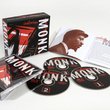
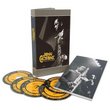
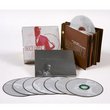


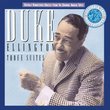
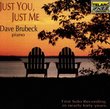
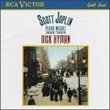
![Across The Universe [Deluxe Edition]](https://nationalbookswap.com/cd//m/51/1251/1241251.jpg)
